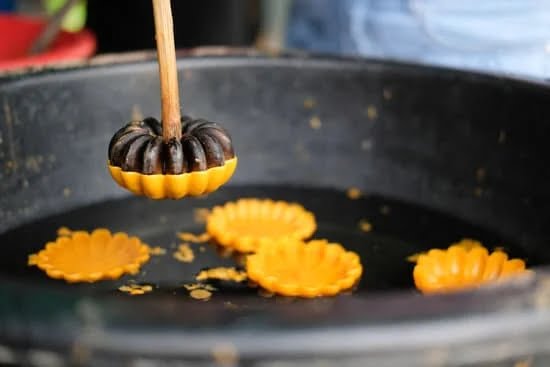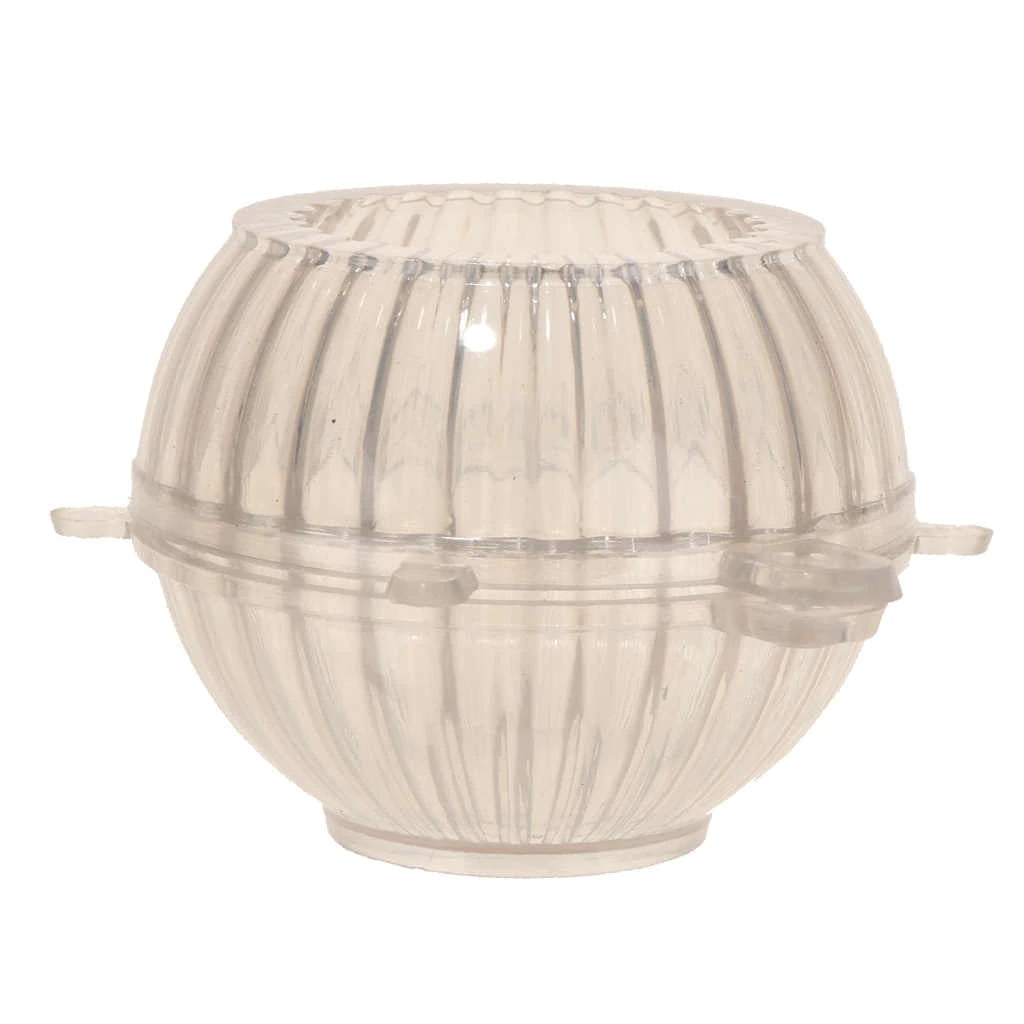What is flashpoint in candle making? Understanding the importance of flashpoint is crucial for anyone involved in the art and science of creating candles. In this article, we will delve into the concept of flashpoint and its significance in candle making.
From discussing what flashpoint is to exploring the science behind it, we will also explore how factors like ingredients, waxes, and additives can affect the flashpoint in candle making. Additionally, we will highlight the importance of knowing the flashpoint for safety purposes and provide practical tips for finding and working with materials with different flashpoints.
Flashpoint plays a critical role in candle making as it determines the temperature at which a particular wax, fragrance oil, or additive can ignite when exposed to a flame. Understanding the flashpoint is essential for ensuring that candles are safe to use and handle. It also influences the choice of materials and techniques used in candle making to minimize potential risks.
Throughout this article, we will take an in-depth look at what exactly flashpoint is and how it relates to the candle making process. By understanding the science behind flashpoint and considering various factors that can impact it, candle makers can make informed decisions about their materials and processes to create both successful and safe candles.
Whether you are a novice or experienced candle maker, having a good grasp of flashpoint is vital for producing high-quality candles while prioritizing safety.
What Is Flashpoint and How Does It Relate to Candle Making
Understanding Flashpoint
In the context of candle making, the term “flashpoint” refers to the temperature at which a particular substance can ignite and produce a flame when exposed to an open flame or heat source. This is an important consideration for candle makers as it directly affects the safety and quality of their products. Understanding the flashpoint of different materials used in candle making is essential to ensure that the candles are safe to use and do not pose any fire hazards.
Relevance to Candle Making
The flashpoint of various ingredients, waxes, and additives used in candle making plays a crucial role in determining how these materials should be handled, processed, and integrated into the candle-making process. Different types of waxes and fragrance oils have different flashpoints, which means that they need to be handled and combined in specific ways to ensure that the finished product is safe for use.
Additionally, understanding the flashpoint helps candle makers make informed decisions about the type of containers, wicks, and other components that will be suitable for their candles.
Safety Considerations
Knowing the flashpoint of materials used in candle making is essential for ensuring safety during both the manufacturing process and when using the candles. It allows producers to take necessary precautions while handling potentially flammable substances and helps consumers make informed decisions about how they use and store their candles. By understanding flashpoints, manufacturers can create guidelines for safe usage, storage, and disposal of their products.
The Science Behind Flashpoint in Candle Making
The flashpoint in candle making is a crucial factor to consider when working with different materials. Understanding the science behind flashpoint can help candle makers create safe and high-quality products. In this section, we will delve into the scientific explanation of what flashpoint is and how it directly relates to the process of candle making.
What is flashpoint in candle making? Flashpoint refers to the temperature at which the vapors from a flammable liquid will ignite when exposed to an open flame or heat source. In candle making, various materials such as waxes, fragrances, and additives have different flashpoints that need to be taken into account during the production process. Knowing the flashpoint of these materials is essential for ensuring safety and preventing potential fire hazards.
The science behind flashpoint in candle making involves understanding the chemical properties of the materials used. Different substances have varying levels of volatility, which affects their flashpoints. For example, paraffin wax typically has a higher flashpoint compared to soy wax.
Additionally, certain fragrances and essential oils may have lower flashpoints, requiring careful handling during the blending process. Ultimately, knowledge of these scientific principles allows candle makers to make informed decisions about which materials to use and how to work with them safely.
Factors affecting Flashpoint in Candle Making:
- Chemical composition of waxes and additives
- Volatility of fragrances and essential oils
- Temperature at which materials are heated during production
Incorporating an in-depth understanding of the science behind flashpoint into candle making practices can lead to safer working environments and superior end products for consumers. It also underscores the importance of proper training for individuals involved in crafting candles as a business or hobby.
Factors Affecting Flashpoint in Candle Making
When it comes to candle making, understanding the concept of flashpoint is essential in ensuring both the quality and safety of the final product. The flashpoint of a candle refers to the temperature at which its wax and fragrance combination will ignite if exposed to an open flame. This critical factor is determined by various elements, including the specific ingredients, waxes, and additives used in the candle-making process.
Different materials used in making candles have varying flashpoints, which can significantly impact the overall safety and performance of the finished product. For instance, waxes such as soy wax typically have a higher flashpoint compared to paraffin wax. In contrast, certain fragrance oils or additives may have lower flashpoints, making them more flammable when heated.
The choice of ingredients and additives also plays a crucial role in determining the flashpoint of a candle. Essential oils, for example, often have different flashpoints than synthetic fragrances. Beeswax also has its own unique properties that affect its flashpoint. Therefore, it is important for candle makers to carefully consider these factors when formulating their products to ensure both safety and quality.
| Material | Flashpoint (°F) |
|---|---|
| Soy Wax | 150-200°F |
| Paraffin Wax | 130-165°F |
| Beeswax | 145-190°F |
Importance of Knowing the Flashpoint in Candle Making for Safety Purposes
The flashpoint in candle making is an essential factor to consider for safety purposes. Understanding this concept is crucial in ensuring that the process of making candles is done safely and effectively. This section will delve into the importance of knowing the flashpoint in candle making for safety purposes.
Preventing Fire Hazards
One of the primary reasons why knowing the flashpoint in candle making is important for safety purposes is to prevent fire hazards. The flashpoint is the temperature at which a flammable substance can ignite when exposed to an open flame or heat source. By understanding the flashpoint of the materials used in candle making, such as waxes and fragrance oils, candle makers can take necessary precautions to avoid potential fire accidents during the production process.
Ensuring Safe Handling
Knowing the flashpoint in candle making also ensures safe handling of materials. Different ingredients used in candle making have varying flashpoints, and being aware of these allows for proper storage, transport, and usage procedures. For instance, if a particular fragrance oil has a low flashpoint, extra care must be taken when handling it to minimize the risk of accidental ignition.
Protecting Personal Safety
In addition to preventing fire hazards and ensuring safe handling, understanding the flashpoint in candle making also protects personal safety. By following recommended guidelines and best practices related to handling materials with different flashpoints, candle makers can minimize the risk of injuries or accidents while working with flammable substances. Furthermore, knowledge of flashpoints allows for appropriate firefighting measures to be put in place should an incident occur during the candle making process.
How to Find the Flashpoint of Candle Making Materials
Finding the flashpoint of candle making materials is crucial for ensuring safety and success in your candle making process. The flashpoint refers to the temperature at which a particular material gives off enough vapor to ignite in the presence of an open flame. It is an important factor to consider when working with various ingredients, waxes, and additives in candle making. Here are some methods for finding the flashpoint of candle making materials:
1. Use a Flash Point Tester: A flash point tester, also known as a flash point analyzer, is a specialized device designed to determine the flash point of a substance. This tool typically uses a small sample of the material and heats it gradually until it reaches a temperature at which it produces enough vapor to ignite.
2. Refer to Material Safety Data Sheets (MSDS): Manufacturers are required to provide MSDS for all chemical products they produce. These sheets contain important information about the materials, including their flashpoints. When working with commercial candle making supplies, always refer to the MSDS provided by the suppliers to identify the flashpoints of your materials.
3. Conduct Small-Scale Tests: If you are working with natural or homemade ingredients, you can conduct small-scale tests to estimate their flashpoints. Place a small amount of the material on a heat-resistant surface and carefully heat it with an open flame while monitoring for signs of ignition.
By knowing and understanding the flashpoints of your candle making materials, you can take appropriate safety measures during the production process. This knowledge enables you to handle materials safely and make informed decisions about ingredient combinations and heating temperatures, ultimately contributing to successful and hazard-free candle making.
Best Practices for Working With Materials With Different Flashpoints in Candle Making
When it comes to working with materials with different flashpoints in candle making, it is essential to follow best practices to ensure safety and success in your candle making process. Understanding how to handle materials with varying flashpoints is crucial in preventing accidents and achieving the desired results in your candles.
One of the best practices for working with materials with different flashpoints in candle making is to always handle them in a well-ventilated area. This is because different materials release different levels of flammable vapors, and proper ventilation helps to reduce the risk of these vapors accumulating and causing a potential fire hazard. Additionally, using protective equipment such as gloves, goggles, and aprons can further minimize the risk of accidents when working with materials with varying flashpoints.
Another important practice is to carefully store materials with different flashpoints according to their specific requirements. Some materials may need to be stored in a cool, dark place away from direct sunlight or heat sources, while others may have specific storage temperature requirements.
By following these guidelines, you can prevent any unexpected reactions or hazards that may result from improper storage of materials with different flashpoints. Understanding how each material should be stored can ultimately contribute to a safer candle making environment.
In addition, when working with materials with different flashpoints in candle making, it is crucial to be mindful of proper labeling and identification. Clearly labeling each material and keeping an inventory of their respective flashpoints can prevent mix-ups during the manufacturing process. This practice not only ensures safety but also enhances efficiency by avoiding errors that could lead to potential hazards or compromised quality of your candles.
Conclusion
In conclusion, understanding the concept of flashpoint is crucial for successful and safe candle making. The flashpoint of a material determines how it should be handled and at what temperature it can ignite, making it essential knowledge for anyone working with candle making materials. By understanding the flashpoint of each ingredient, wax, and additive used in candle making, crafters can ensure that they are using them safely and effectively.
It is important to remember that the science behind flashpoint in candle making is not just about preventing accidents, but also about creating high-quality products. Different materials have different optimal temperatures for scent throw and burn performance. Knowing the flashpoint allows artisans to make informed decisions that will result in better candles.
In order to find the flashpoint of candle making materials, there are various methods such as using a flashpoint tester or referring to safety data sheets. It is recommended to always research and test your materials before use to guarantee a safe environment for yourself and others.
By incorporating best practices when handling materials with different flashpoints, candle makers can confidently create beautiful products while maintaining safety in their workspace. Always prioritize safety by educating yourself on what is flashpoint in candle making and implementing proper handling procedures throughout the entire candle making process.
Frequently Asked Questions
What Is the Best Flash Point for Candles?
The best flash point for candles is typically around 140-160 degrees Fahrenheit. This allows the candle to be safely lit and burned without producing excess soot or smoke.
Do You Add Fragrance Oil at Flashpoint?
When adding fragrance oil to a candle, it is recommended to do so at or below the flashpoint of the fragrance oil. Adding fragrance oil at its flashpoint helps ensure that it blends well with the wax and minimizes any risk of combustion.
What Does Flashpoint 200 Mean?
A flashpoint of 200 means that the substance will ignite if exposed to an open flame or spark at or above that temperature. In a practical sense, it indicates the potential fire hazard associated with the substance and guides safe handling and storage practices.

Welcome to my candle making blog! In this blog, I will be sharing my tips and tricks for making candles. I will also be sharing some of my favorite recipes.





